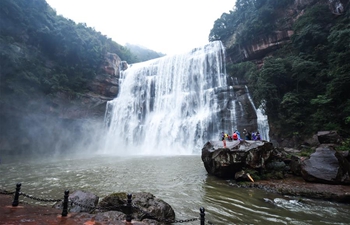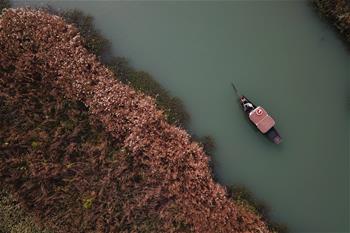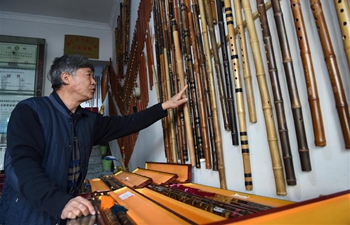by Quan Xiaoshu, Qu Ting
BEIJING, Nov. 30 (Xinhua) -- Thousands of stone artifacts recovered from a paleolithic site in Tibet Autonomous Region in southwest China indicate that humans might have conquered one of the highest and most ecologically-challenging places on the globe at least 30,000 years ago.
"The Nwya Devu site, located 4,600 meters above sea level in central Tibet, is the earliest archaeological site ever identified on the Qinghai-Tibet Plateau," said Gao Xing, leader of the excavation work and author of a related paper published Friday on the journal Science's website.
A total of 3,683 stone artifacts have been discovered from the 30,000-40,000-year-old site, including blades, flakes, chunks and tools. Retouched tools range from scrapers, awls, choppers, notches and burins, a type of Stone Age tool with a chisel-like edge, said the paper.
All the artifacts were produced from the black slate out of an outcrop on Nwya Devu Hill, about 800 meters east of the excavation area, it said.
"Considering the high ratio of debitage, the low number of curated tools, the size of the site as well as its proximity to the raw material, we suggest that this site was a workshop where prehistoric humans procured and knapped stone material," said Gao, a researcher from the Institute of Vertebrate Paleontology and Paleoanthropology, Chinese Academy of Sciences.
However, he noted that humans had not settled down on the plateau at that time.
Analysis of the sediments at the site reveal strong erosion caused by high-energy water flow, showing the environment was much warmer and more humid then, Gao said.
"It allowed foragers to return to the plateau repeatedly to make seasonal usage of the lithic material and other resources in the area," he added.
But their activities have pushed the timing of human occupation of the interior of the plateau to much earlier than previously estimated, which proposed that humans first colonized the area until the Holocene epoch that began approximately 11,650 years ago.
To the archaeologists, the most striking feature of the uncovered artifacts lies in the blades and blade tools.
"Such blades were made from prismatic cores, which closely resemble stone tools classified as Early Upper Paleolithic in Siberia and Mongolia. But they are uncommon in China, except those found in a few sites in northern China, " Gao said.
Earlier genetic studies suggest that the EPAS1 gene might help reduce hypoxia and resist frigidity in Tibetan populations. The gene is formed possibly by an infusion of DNA from Denisovans, an extinct species of ancient humans from Siberia.
The similarity in stone artifacts further shows that Tibet and Siberia might have had interaction about 30,000 to 40,000 years ago, offering a new clue to the long-debated mystery on the origins of the ancient indigenous inhabitants in Tibet.
Most reviews about the paper agree that the discovery enormously prolonged human history on the Qinghai-Tibet Plateau with undisputable archaeological evidence.
However, one of the reviewers mentioned that it is better to be more cautious when talking about its relationships with Denisovan DNA, as there have been no human remains or even ancient DNA found at the site.

















